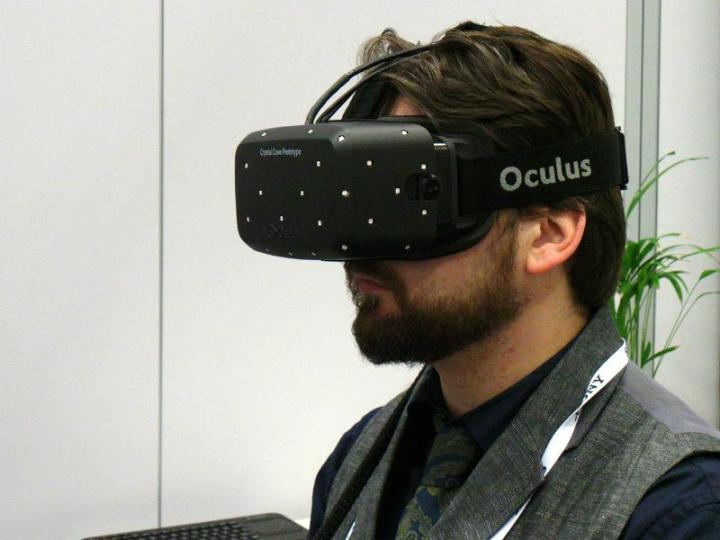
After many years of unrealized potential, virtual reality looks set to make a real difference to the technology landscape. At this year’s South By Southwest event in Austin, TX, both innovative startup Oculus VR and established player Electronic Arts have been sharing their thoughts about where we might be headed in the future.
Virtual reality is not something that EA has invested heavily in up until this point, but the signs are that this is about to change. In a panel at SXSW Gaming, CEO Andrew Wilson said that the company is carefully studying the way that users engage with their games.
“When I look at any of the virtual reality devices, I look at that not in terms of ‘What is that device going to deliver,’ but a desire for gamers to have a different type of modality — the ‘Get In’ type of modality,” Wilson said, as reported by Polygon. “That might be delivered to you through a headset, or through some hologram that evolves out of your living room floor.”
Wilson suggested that VR could function in addition to the the three types of modality that are already in place: ‘lean back’ (gaming on your 80-inch TV screen), ‘lean in’ (for first-person shooters and role-playing games) and ‘lean over’ (for mobile devices).
“I don’t know who the technology partner is that’s going to deliver that modality for us, but let’s start thinking now about the experiences… so that we can deliver experiences that make sense for you; experiences that deliver on the promise and the fantasy of being inside a video game,” added Wilson.
Oculus VR, the company behind the up-and-coming Oculus Rift headset, is also in attendance at SXSW. Co-founder Palmer Luckey spoke in a Q&A session about how his company would take virtual reality technology further than it had ever gone before.
“[Previous headsets] cost hundreds of thousands of dollars to develop, and cost tens of thousands each,” he said, as reported by TechCrunch. “They were using custom CRTs, carbon fibre shells, these crazy spring mounts. The other thing: quality really was not up to where it could be a consumer product… It’s only pretty recently that we’ve had mobile displays… driving this revolution where we have very high pixel density displays that are a reasonable size, that are very light weight, and low cost.”
“The biggest part: no matter how good the VR hardware was at the time, the computing power has never really been there,” explained Luckey. “Today, the average person’s PC, or even a $400 console can render… a pretty good looking 3D environment. If you look at any of those old systems back then, they weren’t anything near photorealism… it wasn’t anything consumers would latch on to.”
Luckey wouldn’t give a date for the official launch of the Oculus Rift (developer headsets are already available), but said that his team were working very hard on the product, particularly in the area of user input. For more on SXSW, check out our complete coverage or this list of the best Twitter feeds to follow.


